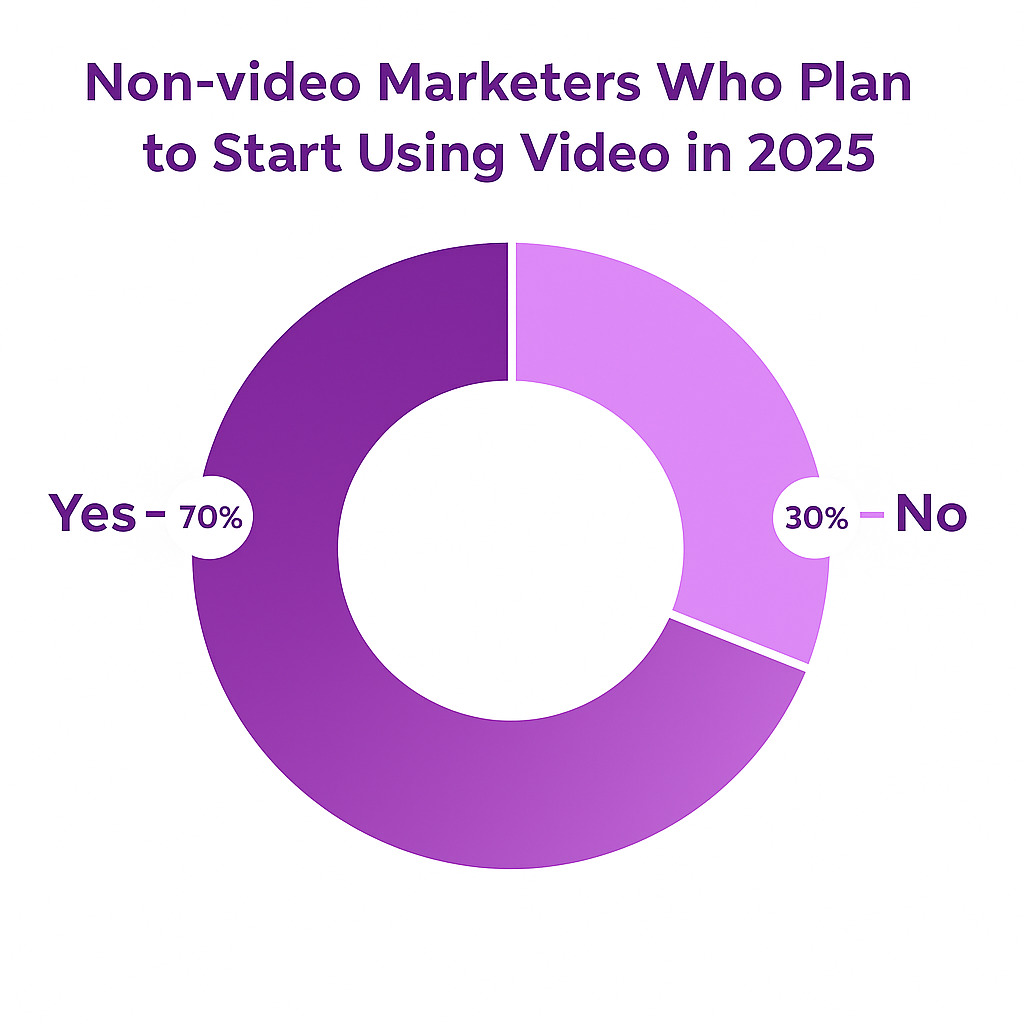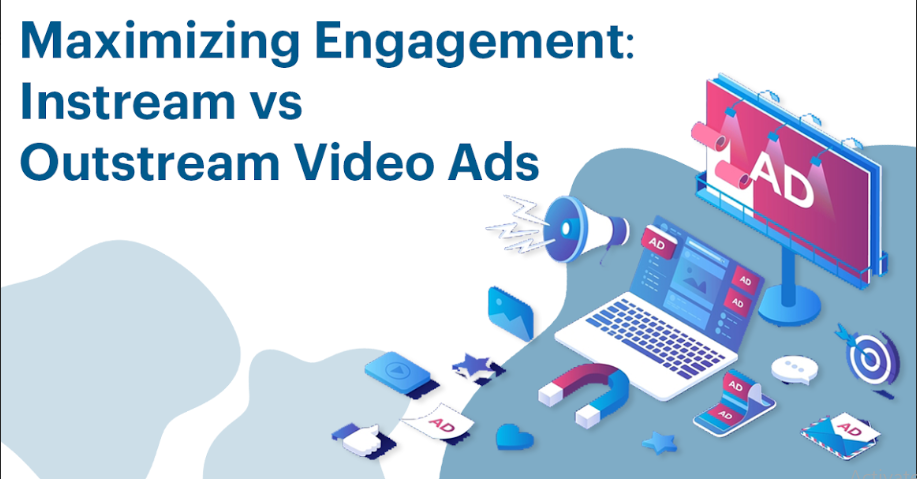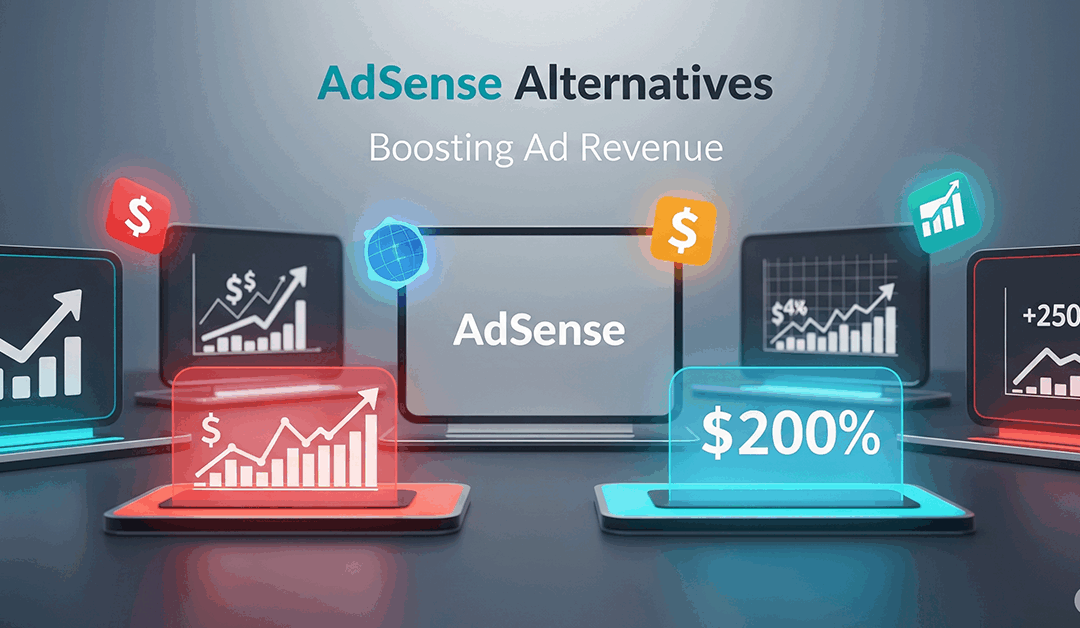Video ads have been an integral part of our daily routine. It was once a constant sight on TV screens, but later, it moved to the internet space. In the past, however, the way that advertising has evolved. From annoying ads with repeated songs, it’s now an expression of creativity as well as a way to communicate between the brands and the individual consumers by identifying need from Instream vs Outstream Video Ads.
It’s no surprise to learn that 96% of marketers view video ads to be an essential part of their advertising strategy. Video ads remain one of the most effective formats, outperforming other types of advertising. Performoo data shows that uploading videos to social media can increase views by 48%.
Its important to know that Instream vs Outstream video Ads which suits your business need. In this blog we will learn about Instream vs Outstream video Ads.
What Is an Outstream Video Ad?
Outstream video has transformed online advertising thanks to its dynamic and flexible style Outstream videos offer greater flexibility by displaying in articles or social media feeds, unlike instream ads that only appear within specific video players. Outstream ads automatically play, capturing users’ attention seamlessly across apps and websites. This feature is unique, increases its impact, and provides opportunities to engage users in the online landscape.
After the video ad plays, outstream ads integrate smoothly into the platform, enhancing the user experience.
Typically, they are in between paragraphs of text or embedded within the grid of information. They are typically silent, and users may be provided with the option to turn on the sound if they want it.
These ads automatically start when they enter the viewer’s field of view and stop when they exit.
Often called native video ads, outstream ads blend naturally into surrounding content, making them less intrusive and more engaging.
The format of outstream video advertisements offers numerous advantages to publishers as well as advertisers. This format enables advertisers to reach a larger audience by strategically placing outstream ads in social media posts or feeds that often go unseen in conventional video content.
The increased reach of this platform gives advertisers the opportunity to reach new and varied audience segments, increasing their brand’s visibility and potential for engagement.
Additionally, they provide users with a seamless experience because they do not interfere with the main content. This ensures an uninterrupted browsing experience.
Publishers also benefit from the increased ad inventory as well as income generation possibilities with outstream video advertisements regardless of their content for video. With the rising popularity of video ads, 70% of non-video marketers plan to include videos in their 2025 strategies.

What is an Instream Video Ad?
Instream ads integrate smoothly into videos, appearing as pre-roll, mid-roll, or post-roll ads. They play directly in the video player on platforms like YouTube, with a fixed duration that cannot be skipped.
Instream videos create a seamless viewing experience since viewers expect ads while browsing media. This leads to deeper engagement, as users remain focused on the video player throughout the ad.
Instream Vs Outstream Video Ads
When we think about the possibility of an outstream video, we need to discuss how it is different from an instream video. Instream vs outstream video ads should be considered a major decision in the framework of a marketing strategy.
If we talk about advertising in this manner, it is important to distinguish between in-banner advertising and instream advertising, which can be difficult to discern.
The main difference between instream vs outstream video ads lies in where they appear and how they engage users.
Key points
Outstream advertisements play automatically whenever they appear on a website or application, and they can pause or stop once they’re no longer in view. They offer opportunities to appeal to a larger public and to engage with users who might not actively seek videos. Outstream ads offer a smooth user experience, blending into the surrounding content without disrupting any main video playback.
In contrast, advertisers frequently pair instream video ads with long-form videos to create a highly immersive experience. They are perfect for delivering branded messages, product demos, or storytelling ads.
Instream video ads benefit from the captive viewers who have chosen to view the video.
In contrast to their competitors, Outstream video ads provide greater flexibility regarding the format and placement. The ads allow advertisers to expand their reach beyond specific video platforms and take advantage of the popularity of news articles or feeds on social media to engage users through captivating videos. This flexibility creates possibilities for advertisers to reach their audience in a variety of creative ways.
Types of Outstream Video Ads
With regards to streaming video outstream, different varieties meet specific objectives in advertising and the user experience. Let’s look into some popular advertising types: in-banner, in-page, and in-text.
In-Page
The outstream video on the page format provides advertisers with a powerful method of attracting attention inside the limitations of a website. Outstream video ads seamlessly blend into the page’s content, fitting perfectly within the layout.
The advertisement’s video pops into be seen as people scroll across the website, triggering interaction while maintaining the overall user experience. By embedding the video in the web page’s structure, advertising companies can efficiently communicate the message of the brand to users without affecting their browsing experience.
In-Banner
Outstream ads in the In-banner are a creative combination of static banner advertisements and captivating videos. In the event that they are used, these advertisements are placed in a specific space on an internet page. They are typically with visuals or texts.
When users visit the site as they browse, the video inside the banner automatically begins to play, giving viewers an exciting and captivating experience. Video ads in the banners draw attention to the visual impact of traditional banners for display, using the potential of video to communicate information more engagingly and memorably.
In-Text
Outstream video ads in text revolutionize the method by which advertisers present videos by embedding them directly in written texts. The ads blend seamlessly into the text and are often placed in between paragraphs or on natural breaks.
While readers are engaged with the content and engage with the text, the video advertisement comes out of the page, enriching the read by adding multimedia. In integrating video seamlessly into the textual narrative, outstream advertisements offer a symbiotic and captivating experience, enthralling readers as they read the textual information.
Each type of outstream video ad is a tool of strategic use to advertisers, giving them the ability to adapt their ads for specific situations and boost the participation of the audience.
Benefits of Outstream Video Ads for Publishers
Based on the eMarketer report, video advertising expenditure continues to increase as a percentage of digital advertising. In 2022, video was responsible for more than 50% of advertising on programmatic media at the beginning of time.
By 2023, the sum of money U.S. advertisers spend on digital programmatic video will be greater than the amount of television ads on linear channels. In the coming years, more than 90% of digital video ad spending will shift to programmatic platforms.
That means the marketing of outstream videos is expected to grow and develop within the coming years, making it worthwhile to study its advantages.
The inventory of ads has increased.
Outstream ads help publishers increase revenue by expanding their ad inventory without disrupting the user experience. Because these ads aren’t exclusive to particular video players, they can include them on different sections of their website pages, thus expanding the range of advertising spots.
Improved user experience
These ads are less intrusive than traditional video ads, making them more engaging and less likely to interrupt the content flow. They typically play automatically when they show up on the screen, and they are usually with sound only when the user views them. In this way, they offer a quiet and smooth ad experience.
Revenue potential to increase
Outstream video ads also open new income streams for publishers, maximizing their earning potential. With the help of the expanded advertisement inventory and offering immersive video ads, publishers can attract greater advertisers and command more ad revenue, thereby making their total revenue more lucrative.
Engagement and Broad reach
Outstream video ads have a greater reach since they do not have to be restricted to specific video placements. Publishers can place these ads inside blog articles, blog posts, and other types of textual material, which allows them to connect with users who do not normally consume video or interact with players.
Flexible and flexible
Outstream video advertisements offer flexibility regarding ad placement and layout. Publishers can decide where and how ads appear, making them adaptable to screens of various sizes and different devices. Furthermore, the ability to scale video advertisements allows publishers to accommodate different kinds of content and adjust their advertising strategies to suit them.
The Drawbacks of Streaming Video Advertisement
With the constantly evolving online advertising market, outstream video advertisements have become a hot option over conventional instream ads. Although they have the benefit of reaching audiences outside the dedicated video platform, this new and innovative format has its drawbacks.
We’ll look at the drawbacks of video advertisements that are outstream with a focus on the user experience as well as viewability.
User Experience: Intrusion and Disruption
Video advertising in Outstream, if not properly implemented, could interfere with the smooth user experience they expect from their browsing. The potential for these ads to become intrusive or auto-play without consent from the user is that the ads may interfere with browsing or reading, which can cause frustration as well as a negative impression of the advert itself as well as the website hosting it.
Engaging users should be balanced by consideration of the intentions of their browsers.
Viewability Challenges:
Advertisers prioritize visibility, which measures the likelihood that viewers will actually see an advertisement. However, ads that are outstream typically have a lower viewability rate compared to equivalents on the instream.
In non-video content, they are susceptible to being viewed before they get the chance to be played. In the end, views can drop and limit the impact and efficacy.
Engagement Limitations:
Outstream video advertisements have a particular issue when it comes to attracting viewers who aren’t actively looking for videos.However, outstream ads lack the intent-driven engagement found on video platforms, making it harder to capture users’ attention. This can reduce their effectiveness in building brand awareness and driving conversions.
Contextual Relevance
Another drawback to advertisements that stream video outstream lies within the context of relevancy. In non-video settings, they struggle to be in tune with the needs and tastes of the target viewers.
Lacking a clear connection to the video content could create a situation where the placement feels odd or unrelated, which can weaken the effectiveness of an advertisement and decrease its impact on viewers.
Ad Blocking
The widespread use of ad blockers and browser extensions is a new problem for video advertisements that are out-streamed. Utilizing these devices could effectively make these advertisements inaccessible, severely restricting their potential reach and impact. Advertisers have to confront the reality that their targeted people may be inaccessible to videos as a result of these measures.
Bottom Line
The marketing and branding world can be successful without video ads. Outstream video ads expand your reach by delivering video content beyond traditional hosts and players, offering targeting options similar to banner ads. It’s an excellent advertisement tool for marketers and a fantastic opportunity for publishers to earn money on the site.




